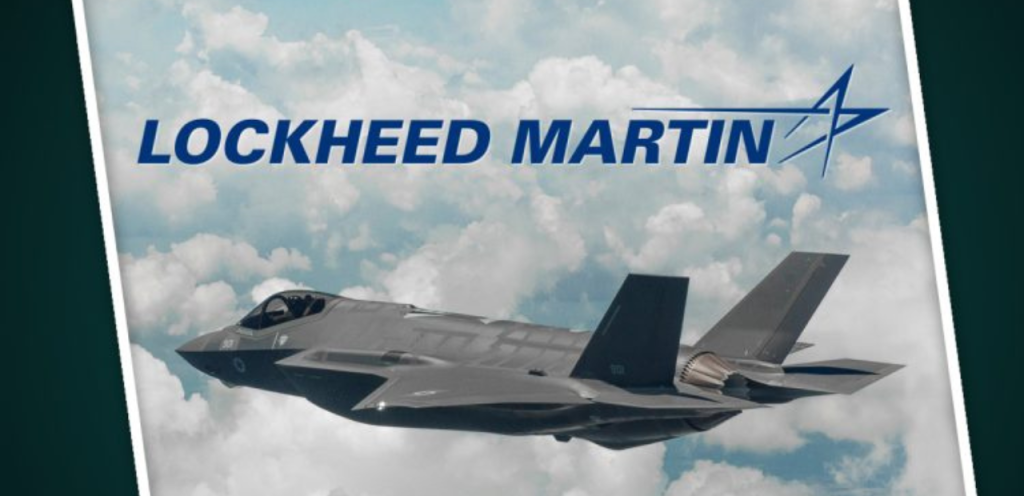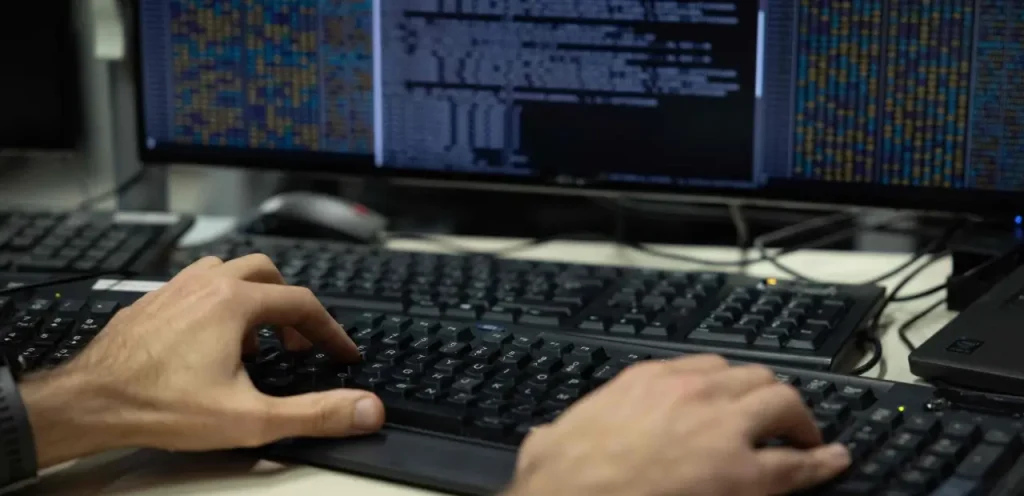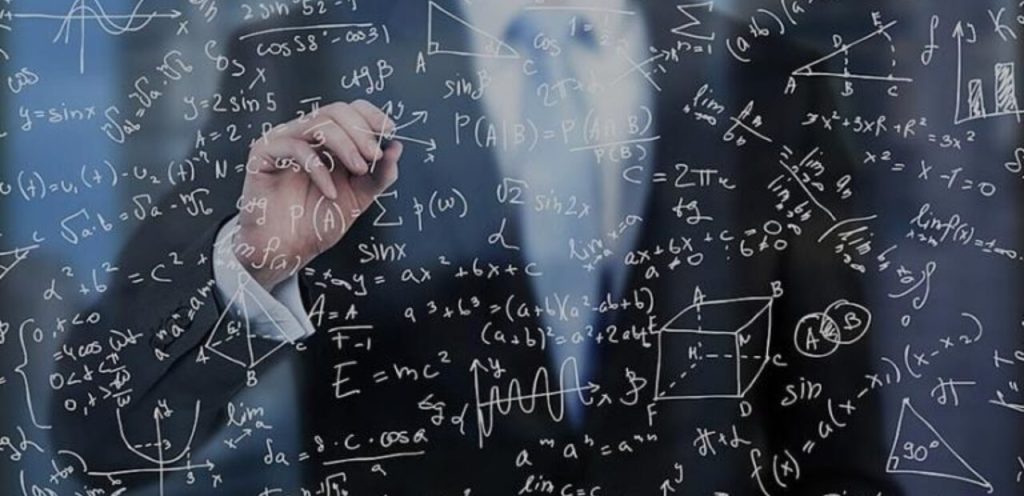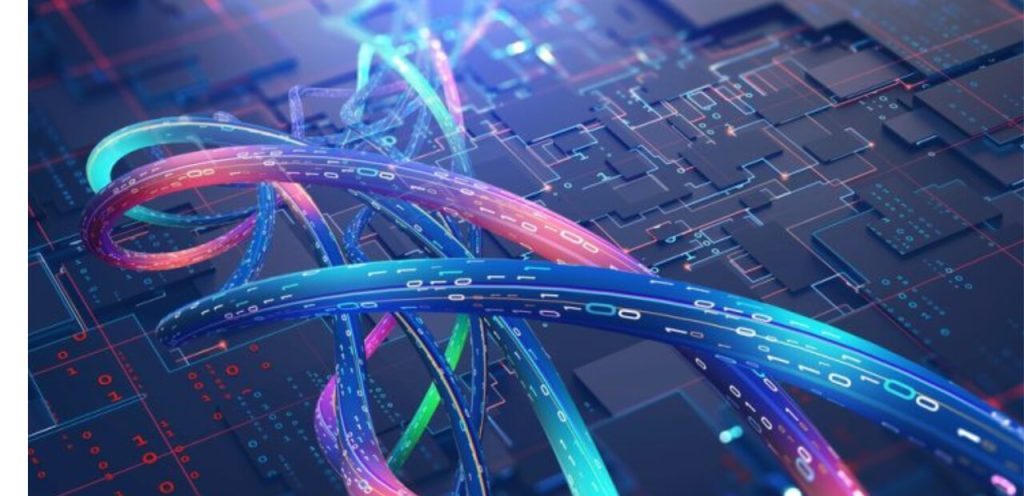Margaret Hamilton, a software engineer, created the software that made landing on the moon possible. Her innovative work was crucial for the success of NASA’s Apollo missions.
Margaret Hamilton’s groundbreaking contributions to the Apollo program revolutionized the field of software engineering and played a pivotal role in achieving the historic moon landing. As the director of the Software Engineering Division at the MIT Instrumentation Laboratory, Hamilton led the development of on-board flight software that was essential for guiding the spacecraft and ensuring the safety of the astronauts.
Her expertise and dedication paved the way for one of humanity’s greatest achievements, demonstrating the power of technology and human ingenuity in reaching new frontiers beyond Earth.
The Apollo Guidance Computer
Margaret Hamilton, an American computer scientist, led the software engineering team that developed the Apollo Guidance Computer, crucial for landing on the moon. Her innovative software made the historic moon landing possible.
The Apollo Guidance Computer was the first computer to be used in space. It was developed by a team of engineers led by Margaret Hamilton at the Massachusetts Institute of Technology (MIT) Instrumentation Laboratory. The computer was designed to provide guidance, navigation, and control to the Apollo spacecraft during its journey to the moon. In this section, we will explore the origins of the Apollo Guidance Computer and the importance of this groundbreaking invention.
Origins Of The Apollo Guidance Computer
The Apollo Guidance Computer was developed as part of the Apollo program, which was a series of space missions conducted by NASA between 1961 and 1975. The goal of the program was to land a man on the moon and bring him back safely to Earth. To achieve this goal, NASA needed a computer that could perform complex calculations and provide guidance to the spacecraft during its mission. The development of the Apollo Guidance Computer began in the early 1960s, and it was a massive undertaking. The computer had to be small enough to fit in the spacecraft, lightweight, and reliable enough to withstand the rigors of space travel. The team of engineers working on the project faced numerous challenges, but they persevered and succeeded in creating a groundbreaking invention that would change the course of history.
Importance Of The Apollo Guidance Computer
The Apollo Guidance Computer was a critical component of the Apollo spacecraft, and it played a vital role in the success of the Apollo program. The computer was responsible for controlling the spacecraft’s trajectory, monitoring its systems, and guiding it to a safe landing on the moon. Without the Apollo Guidance Computer, the Apollo spacecraft would not have been able to land safely on the moon, and the Apollo program would have been a failure. The computer’s success paved the way for future space exploration and demonstrated the power of computer technology in solving complex problems. In conclusion, the Apollo Guidance Computer was a groundbreaking invention that played a critical role in the success of the Apollo program. The computer was developed by a team of engineers led by Margaret Hamilton, and it was responsible for guiding the Apollo spacecraft to the moon and back safely. The Apollo Guidance Computer was a testament to the power of human ingenuity and innovation, and it remains one of the most significant achievements in the history of space exploration.
Margaret Hamilton
Margaret Hamilton, a pioneering software engineer, played a pivotal role in the Apollo program, making the moon landing a reality. Her innovative work and leadership paved the way for a monumental achievement in human history.
Early Career
Hamilton’s journey as a software engineer began at the Massachusetts Institute of Technology (MIT), where she worked as the director of the Software Engineering Division at the MIT Instrumentation Laboratory. Her early career laid the foundation for her groundbreaking contributions to the Apollo program.
Role In The Apollo Program
Hamilton’s most significant contribution came as the leader of the team that developed the on-board flight software for NASA’s Apollo program. Her innovative approach and dedication were instrumental in creating the software that enabled the successful moon landing, showcasing the vital role of software engineering in space exploration.
Software Engineering At Mit
Software Engineering at MIT played a pivotal role in the historic moon landing. The development of on-board flight software by the MIT Instrumentation Laboratory, led by Margaret Hamilton, revolutionized space technology and enabled the successful Apollo missions.
Margaret Hamilton And The Mit Instrumentation Laboratory
Margaret Hamilton, a pioneering software engineer, served as the director of the Software Engineering Division at the MIT Instrumentation Laboratory. Under her leadership, the team developed the crucial on-board flight software for NASA’s Apollo program.
Development Of On-board Flight Software
The software created at MIT was a breakthrough in engineering, as it provided the necessary guidance and control for the Apollo spacecraft during critical stages of the mission, including the lunar landing. This remarkable achievement marked a significant milestone in the history of software engineering and space exploration.

Credit: www.wired.com
Challenges Faced
Margaret Hamilton, a pioneering software engineer, led the team that developed the software for the Apollo Guidance Computer, making the moon landing possible. She faced challenges such as limited computing power and ensuring reliability in extreme conditions, ultimately contributing to the success of the historic mission.
The successful landing on the moon by the Apollo 11 mission was an extraordinary feat, and it was made possible by the hard work of many brilliant minds. One of the key components of the mission was the software that helped the spacecraft navigate and land on the moon. The software was developed by a team led by Margaret Hamilton, who was the director of the Software Engineering Division of the MIT Instrumentation Laboratory. However, developing the software was not an easy task, and the team faced several challenges.
Complexity Of The Software
The software used in the Apollo mission was highly complex and had to perform a wide range of tasks. It had to be able to navigate the spacecraft, adjust its trajectory, and land it safely on the moon’s surface. The software had to take into account many variables, such as the spacecraft’s speed, altitude, and position, and make real-time adjustments based on the data it received. Developing such a complex software program was a significant challenge, and the team had to work hard to ensure that it was error-free and reliable.
Safety And Reliability Concerns
Another major challenge the team faced was ensuring the safety and reliability of the software. The software had to work flawlessly, as any errors could have had catastrophic consequences. The team had to develop rigorous testing procedures to ensure that the software was reliable and error-free. They also had to work closely with the astronauts to understand their needs and ensure that the software met their requirements. The team’s hard work paid off, as the software performed flawlessly during the mission and helped the spacecraft land safely on the moon’s surface. In conclusion, the development of the software that made landing on the moon possible was an incredible achievement, and the team led by Margaret Hamilton faced many challenges along the way. The complexity of the software and the need for safety and reliability were just two of the many obstacles they had to overcome. However, their hard work and dedication paid off, and the software they developed played a crucial role in the success of the Apollo 11 mission.
Impact Of Margaret Hamilton’s Work
Margaret Hamilton’s pioneering work as a software engineer was instrumental in the success of the Apollo missions, making the historic moon landing possible. Her innovative coding and leadership at NASA’s Software Engineering Division played a crucial role in this monumental achievement.
Advancements In Software Engineering
Margaret Hamilton, a pioneering software engineer, revolutionized the field of software engineering through her groundbreaking work. Her development of the on-board flight software for NASA’s Apollo program marked a significant advancement in software engineering, setting new standards for reliability and safety critical systems in the aerospace industry.
Legacy In Space Exploration
Margaret Hamilton’s legacy in space exploration is unparalleled. Her innovative approach to software development not only enabled the successful moon landing but also laid the foundation for future space missions. The impact of her work extends beyond the Apollo program, influencing and shaping the trajectory of space exploration for decades to come.

Credit: www.usatoday.com
Recognition And Awards
Margaret Hamilton, an American software engineer, created the software for the Apollo Guidance Computer that enabled the moon landing. Her innovative work was instrumental in the success of the Apollo program and remains a significant achievement in engineering history.
Presidential Medal Of Freedom
Margaret Hamilton, the software engineer behind the software that made landing on the moon possible, was awarded the Presidential Medal of Freedom. This prestigious honor was in recognition of her exceptional contribution to the Apollo program, which played a pivotal role in the successful moon landing mission.
Induction Into The Witi Hall Of Fame
Margaret Hamilton was also inducted into the WITI (Women in Technology International) Hall of Fame. This recognition highlights her groundbreaking work in the field of software engineering, particularly her pioneering efforts in developing the Apollo Guidance Computer software that enabled the historic moon landing.
Margaret Hamilton’s Influence
Margaret Hamilton, a pioneering software engineer, created the software crucial for the moon landing. Her innovative work was instrumental in the success of the Apollo program, showcasing the vital role of engineers in historic achievements like landing on the moon.
Inspiration For Future Generations
Margaret Hamilton’s groundbreaking work in software engineering for NASA’s Apollo program continues to inspire future generations of engineers.
Advocacy For Women In Stem
Through her achievements, Margaret Hamilton has been a strong advocate for women in STEM fields, breaking barriers and paving the way for more inclusivity.
The Untold Story
In the historic mission to land humans on the moon, an engineer played a crucial role in making this monumental achievement possible. The unsung hero behind the scenes, Margaret Hamilton, broke barriers and paved the way for future generations in software engineering.
Overcoming Adversity
Margaret Hamilton faced numerous challenges during her journey to develop the software that powered the Apollo missions. Despite obstacles, she persevered and revolutionized the field of software engineering with her innovative solutions.
Margaret Hamilton’s Personal Reflections
Through her personal reflections, Margaret Hamilton sheds light on the dedication and hard work that went into creating the software for the Apollo program. Her insights offer a glimpse into the passion and commitment required to achieve the extraordinary.
Media Coverage
/cdn.vox-cdn.com/uploads/chorus_asset/file/15385703/Margaret_Hamilton_in_action.0.0.1540775705.jpg)
Credit: www.vox.com
Public Perception
The software engineer behind the moon landing success was Margaret Hamilton. Her groundbreaking work paved the way for the Apollo Guidance Computer, vital for the historic moon landing mission. Margaret Hamilton’s innovations in software engineering played a crucial role in achieving this monumental feat.
Awareness Of Margaret Hamilton’s Contributions
Many are unaware of Margaret Hamilton’s pivotal role in the Apollo program.
Misconceptions And Clarifications
There are misconceptions about the software engineer behind the moon landing success.
Hamilton’s Continued Impact
Margaret Hamilton, a pivotal figure in software engineering, led the team behind the Apollo Guidance Computer, making the moon landing possible. Hamilton’s innovative coding skills were instrumental in the success of the Apollo program, showcasing the lasting impact of her work on space exploration.
Current Projects And Involvement
Margaret Hamilton’s legacy continues to shape the landscape of engineering and space exploration through her current projects and involvement.
Influence On Modern Space Exploration
Hamilton’s pioneering work has had a profound influence on modern space exploration, revolutionizing the way we approach missions beyond Earth.
Educational Outreach
The software that enabled the Moon landing was created by engineer Margaret Hamilton, a key figure in the Apollo program’s success. Her pioneering work in software engineering played a vital role in NASA’s mission to land astronauts on the Moon.
Stem Initiatives
STEM initiatives foster innovation and inspire future generations to pursue engineering.
Educational Programs And Workshops
Engaging educational programs and workshops introduce students to the wonders of software engineering.
Hamilton’s Reflections
Margaret Hamilton, the pioneering software engineer, played a crucial role in the Apollo program, developing the software that made landing on the moon possible. Her reflections on software development and lessons from the Apollo program provide valuable insights into the historic achievement.
Insights On Software Development
Margaret Hamilton’s work on the Apollo program revolutionized software development. She emphasized the importance of rigorous testing and error prevention, setting a new standard for reliability in software engineering. Hamilton’s approach prioritized safety-critical systems, laying the foundation for modern software development practices.
Lessons From The Apollo Program
The Apollo program showcased the power of collaboration and innovation. Hamilton’s team faced unprecedented challenges, pushing the boundaries of technology to achieve the extraordinary. The program’s success underscored the significance of meticulous planning, adaptability, and resilience in overcoming obstacles, serving as an enduring source of inspiration for future generations of engineers and innovators.
Memorializing Hamilton’s Legacy
In honor of Margaret Hamilton’s pivotal role in the Apollo program, various monuments and memorials have been established worldwide. Her contributions have been commemorated through statues, plaques, and dedicated exhibit spaces in prominent scientific institutions. Commemorative events celebrating Margaret Hamilton’s legacy are held annually, bringing together scientists, engineers, and space enthusiasts to honor her remarkable achievements. These events feature keynote speeches, panel discussions, and interactive exhibits showcasing Hamilton’s groundbreaking work in software engineering.
Hamilton’s Vision For The Future
Margaret Hamilton, an American computer scientist and software engineer, led the team that developed the software for NASA’s Apollo program, making the moon landing possible. Her pioneering work in software engineering was crucial to the success of the mission, establishing her as a key figure in the history of space exploration.
Continued Innovation In Software Engineering
Margaret Hamilton’s vision for the future of software engineering was one of continued innovation and improvement. She believed that the lessons learned from the Apollo program could be applied to other fields, such as medicine and transportation, to make them safer and more efficient. Hamilton’s work on the Apollo Guidance Computer (AGC) paved the way for modern software engineering practices, such as testing and debugging, that are still used today. The AGC was a groundbreaking achievement at the time, and it set the standard for what was possible in software engineering.
Space Exploration Beyond The Moon
Hamilton’s work on the AGC not only made landing on the moon possible, but it also paved the way for space exploration beyond the moon. The software she and her team developed was used on subsequent NASA missions, including the Skylab space station and the Space Shuttle. Today, NASA and other space agencies around the world continue to rely on advanced software systems to explore the cosmos. Hamilton’s legacy lives on in the work of the countless software engineers who are pushing the boundaries of what is possible in space exploration.
Conclusion
Margaret Hamilton’s vision for the future of software engineering was one of innovation and improvement. Her work on the Apollo Guidance Computer paved the way for modern software engineering practices, and it set the standard for what is possible in space exploration. Today, software engineers continue to build on Hamilton’s legacy by pushing the boundaries of what is possible in space exploration and beyond.
Hamilton’s Influence On Nasa
In the 1960s, Margaret Hamilton, a pioneering software engineer, led the team that developed the onboard flight software for NASA’s Apollo program. Her groundbreaking work was instrumental in the successful moon landing and has left a lasting impact on NASA’s software engineering practices.
Integration Of Software Engineering Practices
Hamilton’s innovative approach to software engineering set a new standard for mission-critical systems. She emphasized the importance of rigorous testing and error detection, laying the foundation for modern software development methodologies.
Evolution Of Mission Critical Software
Under Hamilton’s leadership, NASA’s mission-critical software evolved from rudimentary code to sophisticated programs capable of guiding spacecraft to the moon and back. Her dedication to quality and reliability set a precedent for future space missions and beyond.
The Human Side Of The Moon Landing
The successful moon landing in 1969 was an iconic achievement for humanity, but behind the scenes, it was the result of meticulous planning, innovative engineering, and the dedication of countless individuals. Among these individuals, software engineer Margaret Hamilton played a pivotal role in making the historic landing possible.
Margaret Hamilton’s Personal Impact
Margaret Hamilton’s pioneering work in software engineering was critical to the success of the Apollo missions. Her innovative programming for the Apollo Guidance Computer (AGC) enabled the spacecraft to navigate and land on the lunar surface with unprecedented precision. Hamilton’s dedication and expertise in software development were instrumental in ensuring the safety and success of the mission.
Reflections From Astronauts
Astronauts who participated in the Apollo missions have consistently highlighted the vital role of software in their successful lunar landings. Their reflections emphasize the profound impact of Margaret Hamilton’s contributions, underscoring the crucial role of software engineering in the historic achievement of landing humans on the moon.
Beyond The Moon Landing
The Apollo 11 mission is one of the most iconic moments in human history. While Neil Armstrong and Buzz Aldrin were the first humans to set foot on the moon, they couldn’t have done it without the help of some very talented engineers. Among those engineers was Margaret Hamilton, who led the team that created the software that made the moon landing possible.
Margaret Hamilton’s Ongoing Contributions
Margaret Hamilton’s contributions to the Apollo 11 mission were critical, but her work didn’t end there. She went on to lead the Software Engineering Division of the MIT Instrumentation Laboratory, which developed software for NASA’s space shuttle program. She also founded Hamilton Technologies, Inc., which specializes in software development for mission-critical systems. Her work has had a lasting impact on the field of software engineering and continues to inspire new generations of engineers.
Space Exploration In The 21st Century
The Apollo 11 mission was a milestone in space exploration, but it was just the beginning. In the 21st century, space agencies and private companies are pushing the boundaries of what we thought was possible. From the Mars rovers to the International Space Station, there are countless opportunities for engineers to make their mark on space exploration. As we look to the future, we can take inspiration from the engineers who made the moon landing possible and continue to push the boundaries of what we thought was possible.
Frequently Asked Questions
Who Developed The Apollo Guidance Computer?
The Apollo Guidance Computer was developed by the Charles Stark Draper Laboratory.
Who Was The First Software Engineer?
Margaret Hamilton was the first software engineer who developed on-board flight software for NASA’s Apollo program.
Does Nasa Need Software Engineers?
Yes, NASA needs software engineers to support missions on Earth and beyond. Software engineers play a crucial role in ensuring the success of NASA’s endeavors.
Which ____ Program Was Designed To Land A Man On The Moon?
The Apollo Guidance Computer, developed by Margaret Hamilton, was designed to land a man on the moon.
Who Developed The Software For The Moon Landing?
The software for the Moon landing was developed by Margaret Hamilton and her team.
What Role Did Software Engineers Play At Nasa?
Software engineers at NASA play a crucial role in supporting the success of missions on Earth and beyond.
Which Program Aimed To Land A Man On The Moon?
The Apollo program was specifically designed to land a man on the moon successfully.
What Were The Goals Of The Apollo Project?
The Apollo Project aimed not only to land Americans on the moon but also to establish technology for national space interests.
Who Was Margaret Hamilton And What Did She Do?
Margaret Hamilton was the director of the Software Engineering Division at MIT, developing software for NASA’s Apollo program.
How Did Margaret Hamilton Contribute To The Moon Landing?
Margaret Hamilton’s innovative software engineering played a vital role in landing astronauts on the moon.
Conclusion
Margaret Hamilton, a pioneering software engineer, played a crucial role in making the moon landing possible through her innovative work on the Apollo Guidance Computer. Her contributions have left an indelible mark on space exploration and the field of software engineering.










